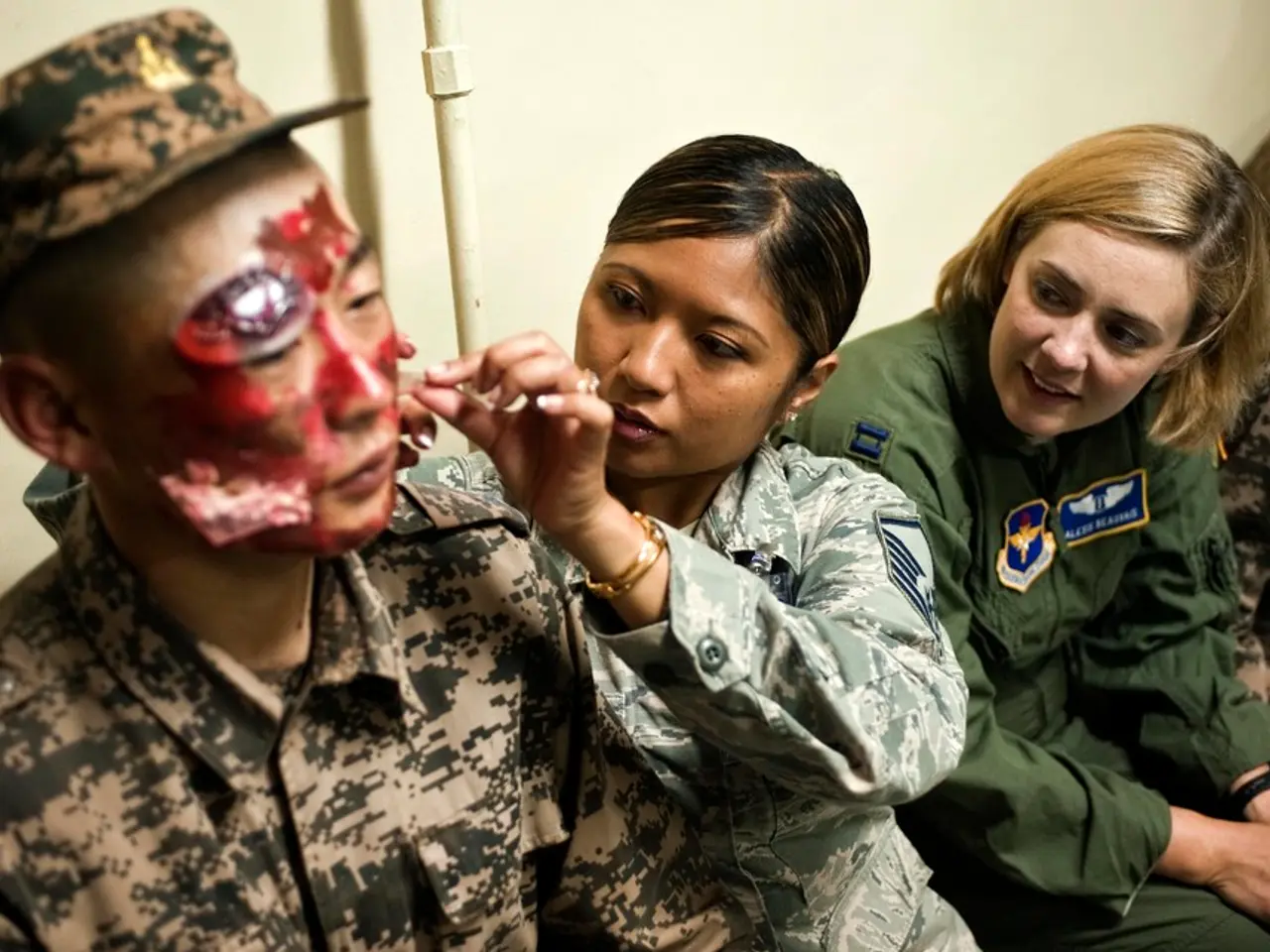Exploration of Advanced Virtual Reality Technology and its Impact on Brain Structure Adjustments
Virtual Reality (VR) is revolutionising the field of neurorehabilitation, offering a promising solution to enhance brain recovery and promote neuroplasticity – the brain's ability to form new neural connections and strengthen existing ones.
## Enhanced Neurorehabilitation
The immersive and interactive environments provided by VR facilitate motor learning and recovery, engaging cognitive-motor dual-task paradigms to stimulate the central nervous system and improve balance and gait in neurological patients.
VR's ability to stimulate cortical reorganisation is particularly noteworthy. By integrating sensory feedback and real-time cognitive challenges, VR encourages the brain's adaptability and rewiring, which is essential for recovery from neurological injuries.
Personalised rehabilitation pathways are another significant advantage of VR. Tailoring interventions to individual needs through adaptive difficulty levels and feedback mechanisms can lead to more effective and efficient recovery processes.
## Brain Recovery and Neuroplasticity
Activating neuroplasticity is one of the key benefits of using VR in conjunction with sensory-motor interventions. This promotes the brain's ability to reorganise and compensate for damaged areas, benefiting patients with neurological disorders or injuries.
Improved cognitive-motor functions are another outcome of VR interventions. By engaging both cognitive and motor systems simultaneously, VR enhances coordination and multitasking abilities, crucial for navigating complex real-world environments.
Moreover, VR offers emotional and psychological benefits. It can provide relaxation and distraction therapy, reducing symptoms of anxiety and pain, improving the overall quality of life for patients undergoing rehabilitation.
## Future Prospects and Challenges
The future of VR in brain rehabilitation looks promising, with the integration of AI, real-time biofeedback, and personalised therapies. However, current VR technology has limitations, such as high cost and a gap between commercially available and medical-grade VR systems.
Ethical and safety considerations, such as motion sickness, cognitive overload, and excessive screen time, need to be addressed in the use of VR for neurorehabilitation. Advanced VR hardware designed for medical use allows for more precise movements and interactions, making virtual environments more realistic and engaging.
VR has shown significant success in improving physical rehabilitation for patients recovering from spinal cord injuries, stroke, and managing phantom limb pain. It also holds potential for neurodegenerative diseases like Alzheimer's and Parkinson's, helping to slow cognitive decline.
In conclusion, the combination of VR with principles of cortical reorganisation offers a powerful tool for enhancing neurorehabilitation outcomes by promoting neuroplasticity, improving cognitive-motor functions, and addressing emotional well-being. Virtual reality and cortical reorganisation are set to transform rehabilitation, providing patients with more effective and personalised treatment options.
- Virtual Reality (VR)'s integration with various therapies and treatments, including those targeting medical-conditions related to neurological disorders, plays a crucial role in health-and-wellness by stimulating cortical reorganisation and promoting neuroplasticity.
- Advances in technology, such as the integration of AI, real-time biofeedback, and personalised therapies, will further revolutionise VR's role in neurorehabilitation, offering improved solutions for enhancing brain recovery and treating a wide range of neurological disorders.
- While the potential of VR in neurorehabilitation is vast, challenges remain, including the need to ensure safety through addressing issues like motion sickness, cognitive overload, and excessive screen time, as well as bridging the gap between commercially available and medical-grade VR systems to make these technologies more affordable and accessible.




